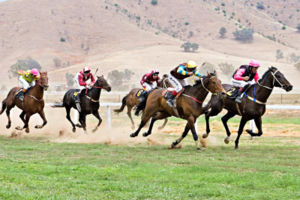
Monday, September 28, 2009
Cheetah
The Cheetah (Acinonyx jubatus) is an atypical member of the cat family that hunts by speed rather than by stealth or pack tactics. It is the fastest of all land animals and can reach speeds of up to 70 mph (120 km/h) in short bursts up to 500 yards (500 m). The cheetah is well known for its amazing acceleration (0 to 100 km/h (~62 mph) in 3.5 seconds which is faster than the Mercedes-Benz SLR McLaren, the Lamborghini Murciélago and the F/A-18 Hornet).


Matterhorn
The eastern face of the Matterhorn, reflected in the Riffelsee. Perhaps the most familiar mountain in the European Alps, the Matterhorn sits on the border between Switzerland and Italy. The peak has four faces, facing the four compass points, with the north and south faces meeting to form a short east-west summit ridge. Despite its prominence in a general sense, the Matterhorn is not among the top 100 mountains in the Alps measured by topographic prominence. Several of its close neighbors, including Monte Rosa, the Dom, Liskamm and the Weisshorn, have higher summits.


Dingle Peninsula, County Kerry, Ireland
Panoramic view of the Dingle Peninsula, the westernmost point of the Republic of Ireland. The peninsula is named after the town of Dingle and is the location of numerous prehistoric and early medieval remains, for example the Gallarus Oratory in the very west of the peninsula near the village of Baile an Fheirtéaraigh in Ard na Caithne.


Interior of the Panthéon, Paris
Panoramic shot of the interior of the Panthéon, a church and burial place located in the Latin Quarter of Paris, France. Originally built as a church dedicated to St. Genevieve, the National Convention ordered it to be changed from a church to a mausoleum for the interment of great Frenchmen. Among those buried in its necropolis are Voltaire, Rousseau, Marat, Victor Hugo, Émile Zola, Jean Moulin, Marie Curie, and Louis Braille.
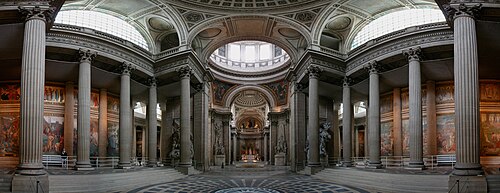

Amur Tiger
Tower Bridge, Sacramento, California, USA
An HDR image of Tower Bridge at twilight crossing the Sacramento River in Sacramento, California. Completed in 1935, this was the first vertical lift bridge in the California Highway System. It is 52 feet (15.8 m) wide, 737 feet (223.3 m) long, and 160 feet (48.5 m) tall. There are four lanes for cars, and one large center lane for a railroad.


Cave paintings, Ajanta Caves, India
Sixth century mural from the wall of the Ajanta Caves, Maharashtra, India, painted during the Gupta Empire. These paintings, like many produced in this time period, freely depict nudity, romantic themes or sexual situations, reflecting the lack of taboos against sex in a society that also produced the Kama Sutra and the Tantric school of Indian philosophy.


2006 Tambo Valley Races, Swifts Creek, Victoria, Australia
Hacha Grande, Lanzarote, Canary Islands
Chapel, Palace of Versailles
The chapel of the Palace of Versailles, one of the palace's grandest interiors. Located in Versailles, France, Versailles is famous not only as a building, but as a symbol of the system of absolute monarchy which Louis XIV espoused. Originally the royal hunting lodge when he decided to move there in 1660, the building was expanded over the next few decades to become the largest palace in Europe. Louis XIV officially moved in 1682 and the Court of Versailles was the centre of power in Ancien Régime France until the royal family was forced to return to the capital in 1789.


Porto, Portugal
Cumulonimbus capillatus incus cloud floating over Swifts Creek, Victoria in Australia
Salzburg, Austria
Panoramic view of the old town of Salzburg, Austria over the River Salzach as viewed from the Festung or Hohensalzburg Fortress. The birthplace of Mozart, Salzburg lies at the northern boundary of the Alps and was the setting for the film The Sound of Music, which was based on the life of Salzburg resident Maria von Trapp. The city has a long history, with traces of human settlements dating back to the Neolithic Age. Today, it is a popular tourist spot, especially for skiers in the winter.


Melbourne Docklands, Australia
A panorama of the Melbourne skyline and parts of the Melbourne Docklands from Yarra's Edge at twilight. The Docklands is an urban redevelopment project which will nearly double the size of the city's central business district when completed in 2015. The suburb is expected to become home to 20,000 people by completion, as well as a workplace for 25,000. The estimated number of visitors per day will be 55,000 (over 20 million a year).


Interior of Old Saint Paul's, Wellington, New Zealand
Old Saint Paul's in Wellington, New Zealand, is an example of 19th-century Gothic Revival architecture adapted to colonial conditions and materials. It is constructed entirely from New Zealand native timbers. While no longer a parish church, it remains consecrated, and is a popular venue for weddings, funerals and other services. This photo of the nave is an example of high dynamic range imaging.


Lower Manhattan skyline
Lower Manhattan (seen here from the Staten Island Ferry) is the southernmost part of the island of Manhattan, the main island and center of business and government of the City of New York. Lower Manhattan includes City Hall, the Municipal Building, the Financial District and the site of the World Trade Center. This area is also the earliest settled (by Europeans) area, and is one of the few areas of Manhattan that does not have its streets arranged in a strict grid pattern.


Abbey spire, Mont Saint Michel, France
Mont Saint Michel, a small rocky tidal island in Normandy, is famous for its Benedictine abbey (spire pictured here) and steepled church (built between the 11th and 16th centuries) which occupy most of the island. The abbey was constructed in the 11th century, but by the time of the French Revolution its popularity had waned to the point where there were scarcely any monks in residence and it was converted to a prison. However, in 1874 it was declared a national monument and is on the list of UNESCO World Heritage Sites.


Prothonotary Warbler
The Prothonotary Warbler is a small songbird of the New World warbler family. It breeds in hardwood swamps in southern Canada and the eastern United States, nesting in a cavity. The male often builds several incomplete unused nests in his territory; the female builds the real nest. It winters in the West Indies, Central America and northern South America. This bird was named after officials in the Roman Catholic Church known as the protonotarii, who wore golden robes.
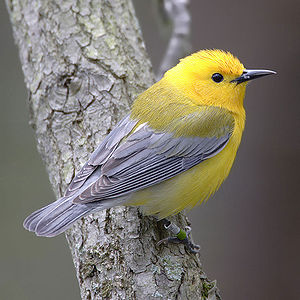

Nilov Monastery on Stolobnyi Island in Lake Seliger in Tver Province, Russia
This photo of the Nilov Monastery on Stolbnyi Island in Tver Oblast, Russia, was taken by Sergei Mikhailovich Prokudin-Gorskii in 1910 before the advent of colour photography. His process used a camera that took a series of monochrome pictures in rapid sequence, each through a different coloured filter. By projecting all three monochrome pictures using correctly-coloured light, it was possible to reconstruct the original colour scene.


Tulips
There about 100 species of tulip, native to southern Europe, north Africa, and Asia. They are perennial bulbous plants growing to 10-70 cm tall with large flowers with six tepals. Besides being the national flower of Iran and Turkey, tulips are closely associated with the Netherlands, so much so that the term "Dutch tulips" is often used for the cultivated forms.


Salad platter
A salad platter, consisting of bread, lettuce, spring onions, cucumber, feta cheese, sun-dried tomatoes, beetroot, cherry tomatoes, olives, and dressing. "Salad" is actually a broad term applied to many food preparations that are a mixture of chopped or sliced ingredients. A salad can be served cold or at room temperature, though it also can form the filling for a hot sandwich. While it can be made with meat or eggs, it usually includes at least one raw vegetable or fruit.
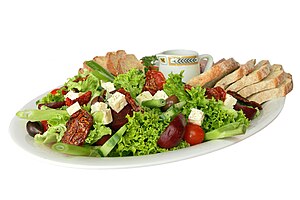

Château de Chambord, France
With its very distinct Renaissance architecture, the Château de Chambord in Chambord, Loir-et-Cher, France, is one of the most recognizable châteaux in the world. The massive castle, originally built as a hunting lodge for King François I, features 440 rooms, 365 fireplaces, and 84 staircases. The château was never intended to provide any form of defence from imagined enemies. As such, the walls, towers and partial moat are purely decorative.
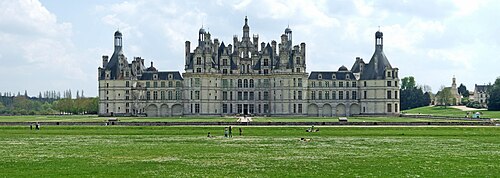

Fortified city of Carcassonne, France
Fortified city of Carcassonne, France, and the Pont Vieux crossing the Aude river
Panorama of the fortified city of Carcassonne (Aude, France) and the Pont Vieux crossing the Aude River. The fortress of Carcassonne was considered impregnable and never conquered. It was begun by the Romans and built up through the years. It fell into disrepair was restored in the 19th century. It is now a UNESCO World Heritage Site.

Panorama of the fortified city of Carcassonne (Aude, France) and the Pont Vieux crossing the Aude River. The fortress of Carcassonne was considered impregnable and never conquered. It was begun by the Romans and built up through the years. It fell into disrepair was restored in the 19th century. It is now a UNESCO World Heritage Site.

Graz, Austria, City Hall
The Rathaus or City Hall of Graz, the second-largest city in Austria after Vienna, at dusk. Graz was the 2003 European Capital of Culture and its "Old Town" is included in the UNESCO list of World Cultural Heritage Sites. Occupying a strategic location, Graz began as Roman fort and survived numerous assaults over the centuries.


Great Dividing Range, Australia
A panorama of Australia's most substantial mountain range, the Great Dividing Range, which stretches from the northeastern tip of Queensland to the Grampians in western Victoria and divides the watersheds of streams and rivers which flow directly into the Pacific Ocean on the eastern coast of Australia, from those of the Murray-Darling Basin which flow away from the coast into the interior plains.


Millenium Wheel or the London Eye, viewed from the rear
Seen here from the rear at twilight, the London Eye, also known as the Millennium Wheel, is the largest observation wheel (a type of Ferris wheel) in the world at 135 m (443 ft) high. The wheel carries 32 sealed passenger capsules and rotates at a rate of 0.26 m/s (about 0.9 km/h or 0.6 mph) so that one revolution takes about 30 minutes to complete.
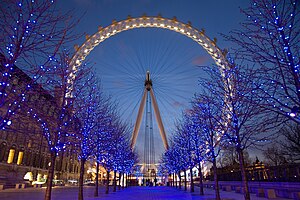

Machu Picchu
A panorama of Machu Picchu Sanctuary, showing the prominent peak of Huayna Picchu. Machu Picchu, probably the most familiar symbol of the Inca Empire, is a well-preserved pre-Columbian Inca ruin located above the Urubamba Valley in Peru at about 2,350 m (7,710 ft). Since 1983 the site has been designated as a UNESCO World Heritage Site, and has been the subject of concern about damage caused by tourism.


Mount Hood, Oregon
Mount Hood, a dormant stratovolcano, reflected in the waters of Trillium Lake, Oregon, United States. At 11,249 feet (3,429 metres), Mount Hood is the highest mountain in Oregon and the fourth-highest in the Cascade Range. It is considered an active volcano, but no major eruptive events have been catalogued since systematic record keeping began in the 1820s.


Mount Hotham, Victoria, Australia
A panoramic image of the scenery from Mount Hotham during the summer. Located in Victoria, Australia, Mount Hotham is the highest ski resort village in the country. Its summit rises to an altitude of 1,861 metres above sea level, while Mount Hotham village stands at 1,750 metres. Most of the skiing is based on one side of a large valley and the area connects to the Bogong High Plains.


Loch Ard Gorge, Victoria, Australia
The Loch Ard Gorge, found in Port Campbell National Park, Victoria, Australia, is named after the clipper ship Loch Ard, which ran aground on nearby Muttonbird Island on 1 June 1878 approaching the end of a three-month journey from England to Melbourne.
Shown here is a panorama of 4 segments taken from the cliffs looking down towards Loch Ard Gorge.

Shown here is a panorama of 4 segments taken from the cliffs looking down towards Loch Ard Gorge.

Malé, capital of the Maldives
An aerial photo of Malé, the capital of the Republic of Maldives. Malé is located on Malé Island in the Kaafu Atoll, but administratively it is not considered part of Kaafu. The island is heavily urbanised, with the city, one of the most densely populated in the world, taking up essentially its entire landmass. The tsunami resulting from the Indian Ocean earthquake in December 2004 flooded two-thirds of the city.


Leadenhall Market, London, England
Leadenhall Market is a covered market that dates back to the 14th century in the City of London, located in Gracechurch Street. The ornate roof structure of the current building, designed in 1881 by Sir Horace Jones, and painted green, maroon, and cream, makes the building a tourist attraction.
Shown here is a spherical panorama of 3 images of the market's interior taken in portrait format.

Shown here is a spherical panorama of 3 images of the market's interior taken in portrait format.

Dinner Plain, Victoria, Australia
A panoramic image of a neighbourhood in Dinner Plain, a town in Victoria, Australia. The town is located on the Great Alpine Road, 10 kilometres from Mount Hotham Alpine Resort, and 375 kilometres from Melbourne. It has a permanent population of approximately 50, yet has over 200 lodges and chalets for tourist accommodation. It is the only freehold village in the Australian Alps.


Great Wall of China, 1907
The Great Wall of China is a 6,352 km (3,948 miles) long Chinese fortification built over a span of nearly 2,000 years, in order to protect the various dynasties from raids coming from areas in modern-day Mongolia and Manchuria. Along most of its arc, it roughly delineates the border between North China and Inner Mongolia. Although it is commonly said that the wall is visible to the naked eye from space, it is more accurate to say that it is visible under favorable viewing conditions, if one knows exactly where to look.


New York City
New York City, nicknamed the "Big Apple", is the most populous city in the United States (8.1 million in 2005) and the most densely populated major city in North America. The city is a center for international finance, fashion, entertainment, and culture, and is widely considered to be one of the world's major global cities. The city proper consists of five boroughs: The Bronx, Brooklyn, Manhattan, Queens, and Staten Island. The city is also distinguished for having the lowest crime rate among the 25 largest American cities.


Sunday, September 27, 2009
Carrots of many colours
Carrots are a root vegetable that can be eaten raw, whole, chopped or shaved into salads for color, and are also often chopped and cooked in soups and stews. β-carotene, a dimer of Vitamin A, is abundant in the carrot and gives this vegetable its characteristic orange colour. Furthermore, carrots are rich in dietary fiber, antioxidants, and minerals. However, as seen here, carrots can be selectively bred to come in many colours. A common urban legend is that carrots aid a human being's night vision. Lack of Vitamin A can, however, cause poor vision and can be restored by adding Vitamin A back into the diet.


Reading Room, British Museum
The Reading Room of the British Museum is situated in the centre of the Great Court. It used to be the main reading room of the British Library, but that relocated to the new British Library building at St Pancras, London. The old Reading Room was opened to the public in 2000, following a renovation by noted architect Sir Norman Foster. It contains a collection of books on history, art, travel, and other subjects relevant to the British Museum's collections, on open shelves.


Hanko, Finland
Hanko is a small port city on the south coast of Finland, 130 km west of Helsinki. The city has a coastline of approximately 130 km (80 miles), of which 30 km (19 miles) are sandy beaches. There are also over 90 small islands and islets within the city limits. The skyline of Hanko is dominated by the church and the water tower (from which this photo was taken). Both of them received their current appearance after World War II, as their predecessors were either damaged or destroyed by the Soviet Army.


Main concourse, Grand Central Terminal, New York, NY, USA
Grand Central Terminal (often still called Grand Central Station) is a train station in Midtown Manhattan in New York City. It is the largest train station in the world by number of platforms: 44, with 67 tracks along them. The four-faced clock on top of the information booth in the center of the Main Concourse (shown here) is perhaps the station's most recognizable icon.


Tower Bridge, London
The Tower Bridge is a bascule bridge that crosses the River Thames in London, England. It was completed in 1894 and the original hydraulic machinery still opens the bridge, although it has been modernised. The central span of 200 feet (61 m) between the towers is split into two equal bascules or leaves, which can be raised to an angle of 83 degrees to allow river traffic to pass. The high-level walkways between the towers houses an exhibition on the bridge's history.


Loch Lomond
Loch Lomond is a Scottish loch located in both the western lowlands of Central Scotland and the southern Highlands. Its surface area is the largest of the lochs, and is second biggest after Loch Ness in terms of water volume in Great Britain. The loch famously features in Andrew Lang's verse, The Bonnie Banks o' Loch Lomond, published around 1876, the chorus of which is well known.


View from Connors Hill, near Swifts Creek, Victoria, Australia
The bush is a term used for rural, undeveloped land or country areas in many places, such as Australia, New Zealand, Canada, South Africa, and Alaska. Because the geography varies greatly between these different places, what constitutes bush also widely differs. In Australia (as seen here), the term is quite specific: It can include agricultural areas and regional settlements, and does not include the even more remote areas that constitute the outback.


Vatnajökull
Cumulus clouds
Cumulus clouds are characterized by dense individual elements in the form of puffs, mounds or towers, with flat bases and tops that often resemble cauliflower. They are formed due to convection. Buoyant, upward air currents, known as thermals rise to a height at which the moisture in the air can condense. Because of this, they "grow" vertically instead of horizontally. Though most common in warm, summer weather, cumulus clouds can be formed at any time of year.


Castle Blankenhain, Crimmitschau, Germany
Vaduz Castle
Vaduz is the capital of the principality of Liechtenstein. It is the seat of the national parliament. The town has about 5,000 inhabitants, most of whom are Roman Catholic, and is located along the Rhine. It is thought to have been founded in the 13th century by the Counts of Werdenberg. In 1322 there is mention of the castle which was sacked by the Swiss in 1499.


San Francisco International Airport at night
San Francisco International Airport (IATA: SFO) opened on May 7, 1927 on 150 acres (607,000 m²) of cow pasture leased from prominent local landowner Ogden L. Mills, and was named Mills Field Municipal Airport. During the economic boom of the 1990s and the dot com boom, SFO became the 6th busiest international airport in the world. However, since the boom times ended, it has fallen back out of the top twenty.


Castle in Germany
Schloss Neuschwanstein ("new swan stone castle") in southwest Bavaria is one of Germany's most popular tourist destinations. Construction was started by King Ludwig II and took 17 years. After his death in 1886, the castle was opened to the public. During World War II, many valuable items (all stolen) were stored at the castle, destined for Adolf Hitler's personal collection.
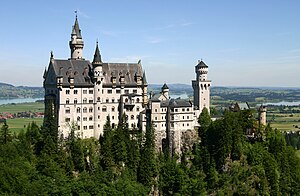

Subscribe to:
Comments (Atom)

